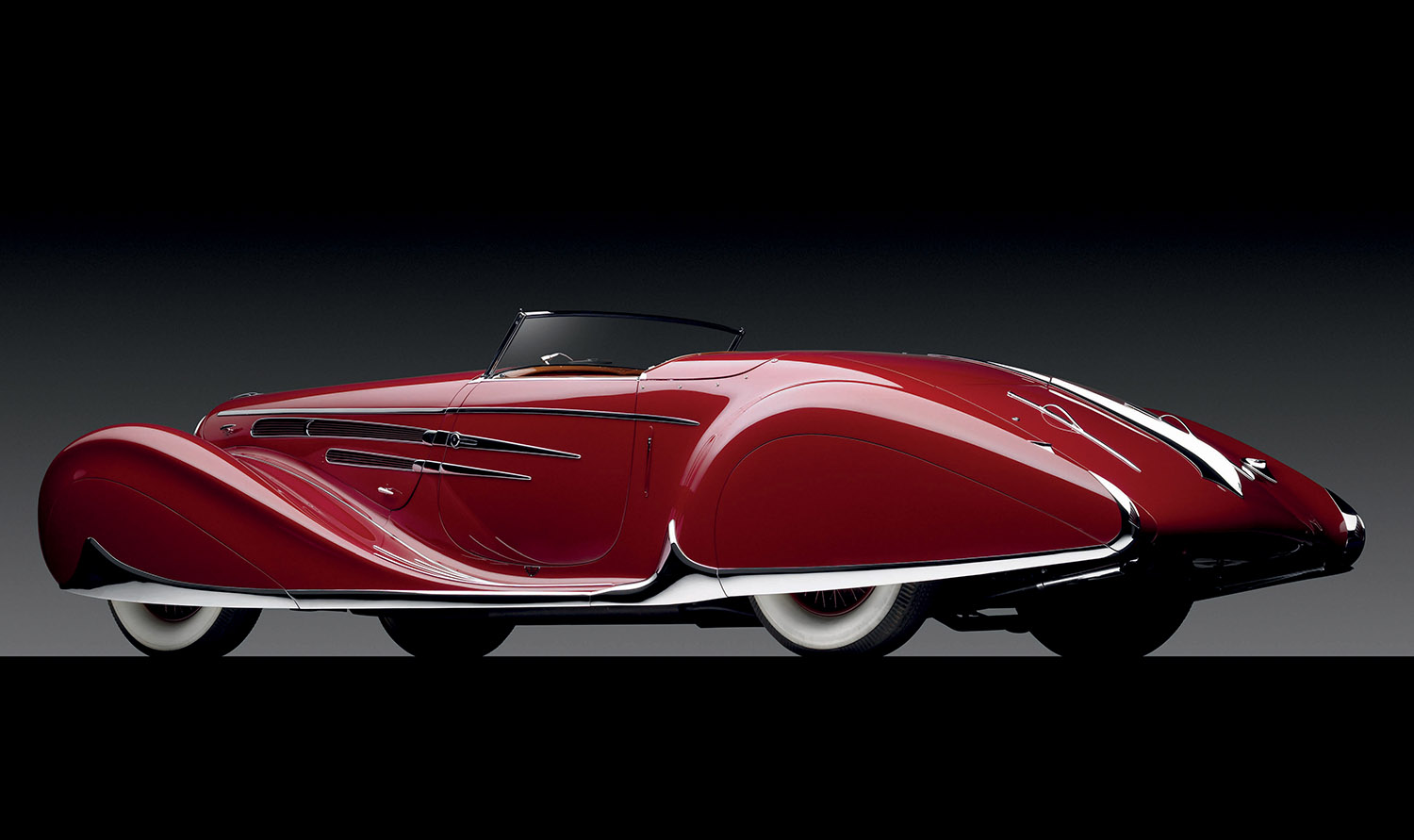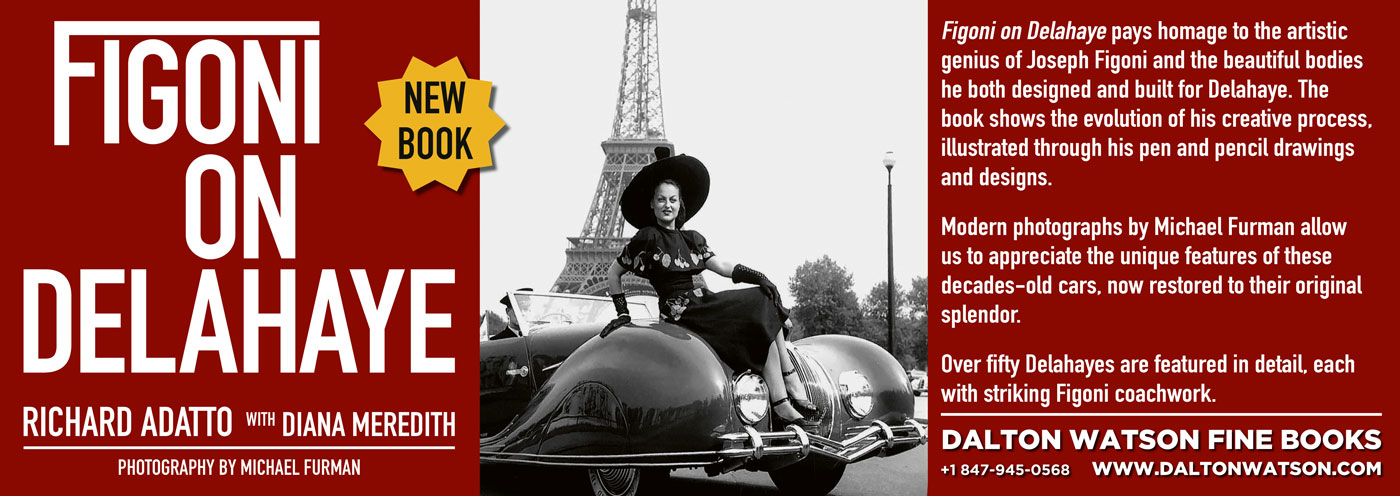Review by Pete Vack
All images from the book
Joseph Figoni’s fabulous flights of fancy have captivated us for a long, long time. While Figoni bodied many Alfas, Talbots and Delages, his most flamboyant creations were built on the Delahaye chassis, over 100 of them. And all are endlessly enchanting.
With help from the Figoni family and photographer Michael Furman, Richard Adatto seeks out his favorite Figoni Delahayes and tells the story of each selected chassis/build number in his latest book. “This collection is limited to what I believe are notable examples of Figoni’s best work for the marque,” writes Adatto.
Figoni on Delahaye, focuses on 48 of the Figoni-bodied Delahayes. Adatto (along with Diana Meredith) is eminently qualified for the task. He founded a commercial construction company, and after forty years in business, sold the firm and began offering his services as a construction consultant. He is an expert on French aerodynamic cars built just before and immediately after World War II, a member of the Advisory Board of the Pebble Beach Concours d’Elegance and has been a judge there for 35 years. He has authored or co-authored six books on his favorite subject.
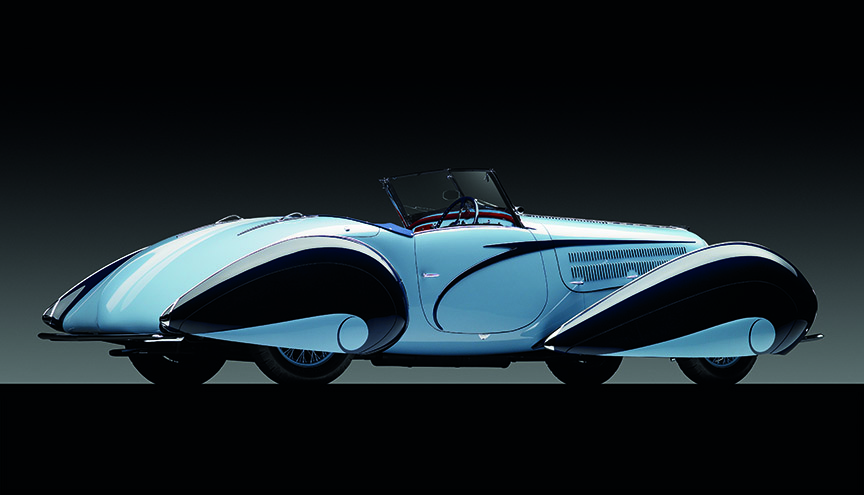
Figoni in blue. Chassis 49150 from 1938 survived the German invasion, then hid in India for decades. With the help of Claude Figoni, author Adatto assisted with the restoration taken on by Peter Mullin in 2007. Michael Furman photo.
We can agree with that. Almost every page may elicit a breathless ‘Ah’, as one gazes upon the dramatic lines of each of his choices, punctuated by the similarly dramatic photography by Michael Furman. Breathe deep, sit back and take it all in.
To accompany the Furman photography are many contemporary images that fill in the history. They too are dramatic and informative. The book also shows the evolution of Joseph Figoni’s creative process, and includes many diagrams and drawings from the Figoni archives.
[A digression here. For the first time that we have seen, each one of the seven ‘Narwal’ Figonis are given their due. We chose to cover them separately in a VeloceToday article, ‘Behold the Narwal.’]
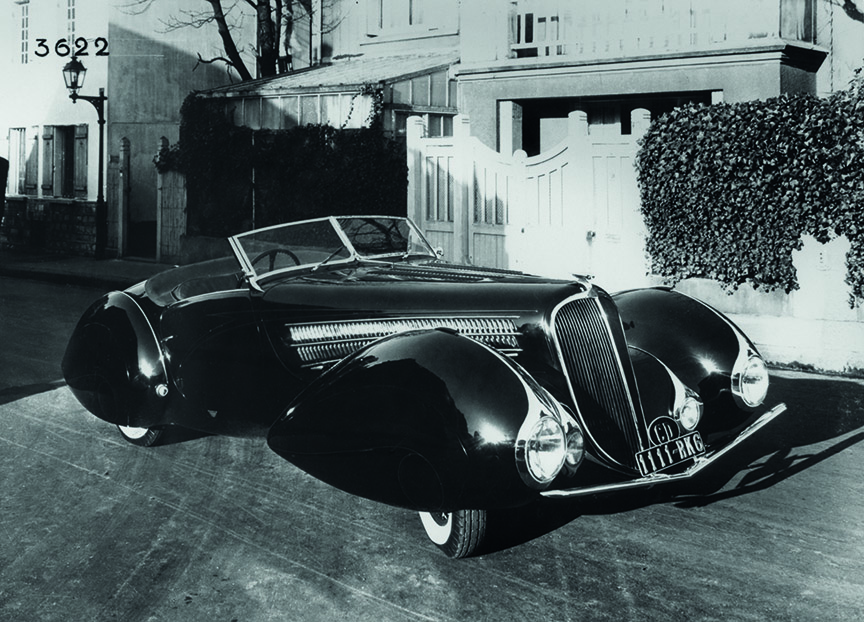
A photo of the 1936 Paris Salon Delahaye, chassis 47247, after it had been purchased by Ali Khan, who requested that the original orange and tea-pink color scheme be changed to black. The license denotes the diplomatic corps in Paris. From the Figoni archives.
The Geo Ham Affair
A particularly interesting sidebar uncovers the Figoni-Geo Ham rift. According to information found in the Figoni archives, French artist Geo Ham approached Figoni with a design for a streamlined coupe prior to the 1936 Paris Auto Salon on October 1st. This was fine but, in the meantime, Figoni was already building what would be the first of a line of cars that would make Figoni a superstar. That car, chassis 47247, (above) was a convertible but had similar lines to the Ham drawing which appeared on the October 1936 issue of the French magazine, ‘L’ILLUSTRATION.’ When the Figoni convertible created a sensation at the Paris Salon, Ham filed suit, claiming he was the designer, based on the coupe he sketched out. It was eventually resolved in favor of Figoni.
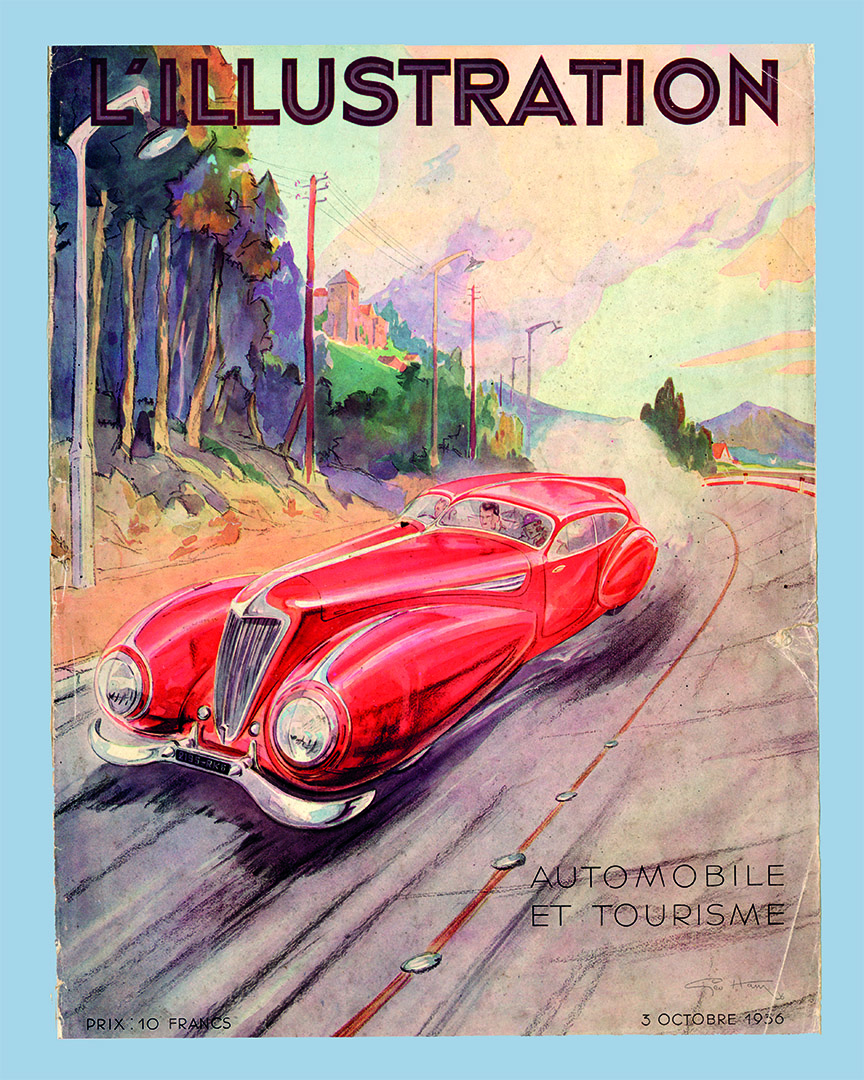
The cover of the magazine ‘L’ILLUSTRATION’ with the Geo Ham design. Note the light and fender treatment. Ham was a staff member of the magazine, doing dozens of paintings for them before the war. During the war Ham served as a war correspondent in Ethiopia. From the Figoni archives.
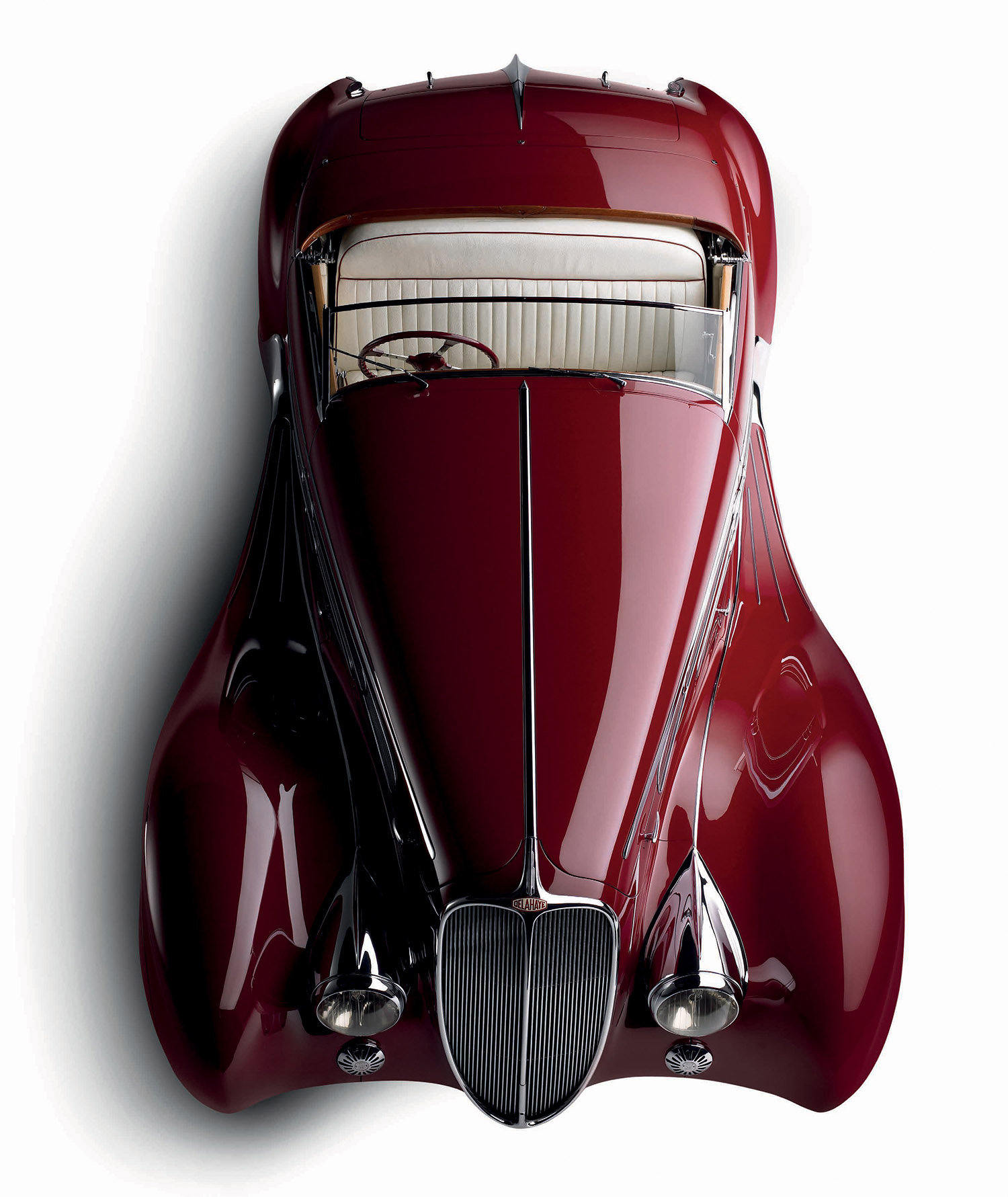
Perhaps the most beautiful and significant Figoni Delahaye is the 1940 NY World’s Fair car, chassis 60744, based on the Type 165 V12. Stored in New York until after the war, it was bought for $3,000 by Roger Barlow. Michael Furman photo.
Figoni and America
As Adatto reveals, it is believed that none other than Harley Earl approached Joseph Figoni after the war to come to Detroit and work in the GM design studio. Wisely, Figoni declined. No mention of this meeting was made in William Knoedelseder’s book about Harley Earl entitled Fins, although he pointed out that Harley went to the Paris Auto Salons every year. No doubt Harley was paying particular attention (not to do so would have been impossible) to Figoni’s Delahayes. Knoedelseder also quotes from a 1939 GM PR booklet, “Modes and Motors” which describes the relationship between the corporate designer and the ‘artist’. Although not written by Earl, it was believed the words reflected his thoughts. Wrote Knoedelseder, “The book told of the ‘artist’ who once regarded manufacturers with ‘thinly veiled contempt’ and thought of them as rough, coarse men whose sole purpose in life was to make money.” It describes how “The job of the designer is to bring together the science of the engineer and the skill of the artist.” It is unlikely that Joseph Figoni would have excelled under such circumstances.
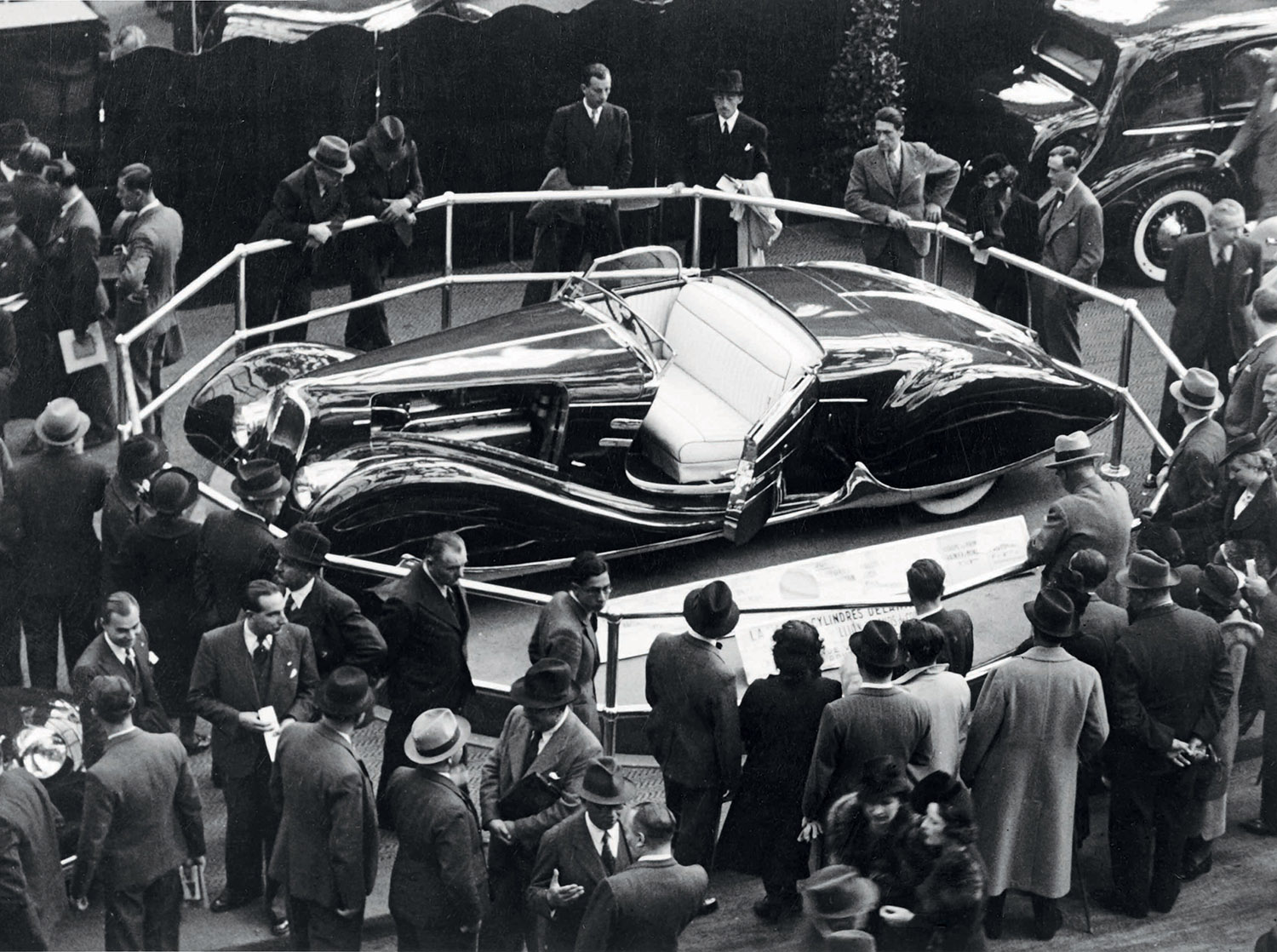
Roger Barlow always said a Figoni would get a lot of attention. This is chassis 60743, the sister car to chassis 60744, also a Type 165 V12, shown here at the 1938 Paris Auto Salon. It won the “Most Beautiful Car” award. Its second owner was Adrian Conan Doyle, son of Arthur. From the Figoni archives.
Another American designer had something to say about the post war creations of Figoni and Saoutchik. From a paper presented to the Detroit section of the Society of American Engineers, entitled “International Styling and the K-310” circa 1951 and published by Road and Track in April 1952, Virgil Exner, who would shortly encourage the use of fins on the Chrysler line of cars, had this comment about French design as compared to British, German and Italian styling:
“With few exceptions, French cars, like the [flamboyantly ornate Napoleonic] coaches of an earlier day, are identified by copious curves in line, form and surface. In recent years, their use of opulent lines has, in my opinion, been considerably overdone. Many feel that present French design has been given a great deal of undeserved publicity—probably due to French prominence in the world of women’s dress fashion.”
Exner then contrasts the French line with that of the Italians. “By way of contrast, let us look at a very similar Talbot chassis, with a body by the Italian designer Stablimenti Farina…Directness and simplicity are the keynotes…Exaggerated feminine curves found in the French version are absent.”
Speaking of America, along the way via Adatto’s book we ran into Jim Bandy. He’s gotten his fair share of press in VeloceToday but we found out that he had another fantastic French car while living in Paris.
For sure, we knew Bandy owned a Franay bodied Talbot Lago, as we have photos of that.
Bandy also had purchased a Figoni Delahaye, chassis 815007, a Type 175 that appeared at the 1948 Paris Auto Salon. Bandy’s Figoni was one of the biggest and most outrageous Delahayes ever built and one of the last Figoni ‘French Curves’ designs. “I loved to drive it,” said Bandy, “going all the way to Deauville and Clermont-Ferrand.”
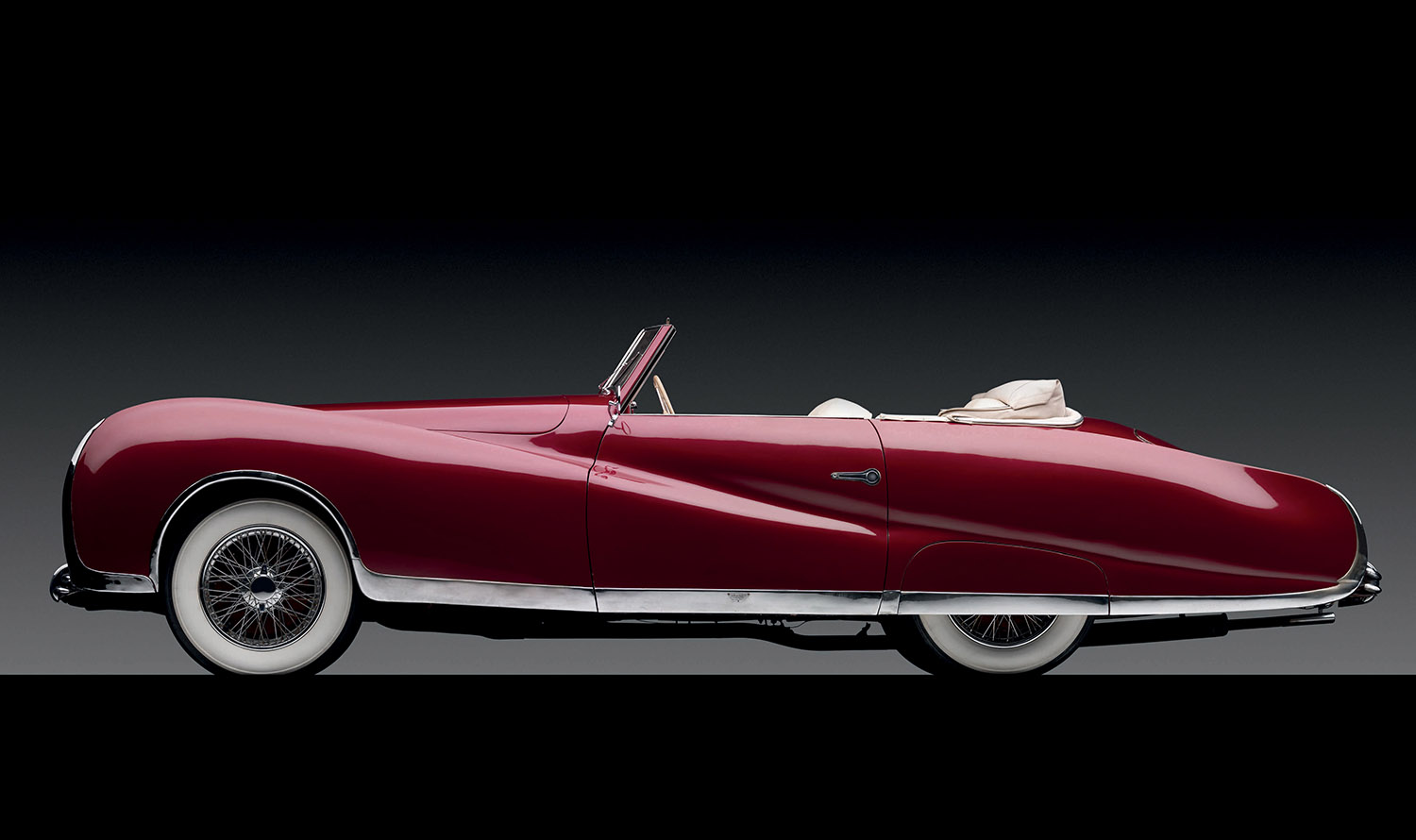
Jim Bandy’s old 1948 Delahaye that he drove while in Paris. Chassis 815007 is now in a private collection. Michael Furman photo.
Figoni had been designing and building bodies on Delahaye chassis since 1936, and for the next 15 years, although each car was different, most conformed to the same overall approach. He held his line until the advent of the slab-sided fully-enveloped body could no longer be ignored. Which is probably good, since many of the last few Delahayes were lacking the charm, beauty, and good taste/bad taste demonstrated on the earlier cars.
Adatto’s book takes us through these stages as he relates the story of each Delahaye of his choice. He provides a brief but interesting history of each car, putting in context with the development of Figoni’s art. There is a chapter consisting of Figoni’s drawings…nothing else is left, no bucks, no models, just the fading sketches of one highly imaginative automobile designer.
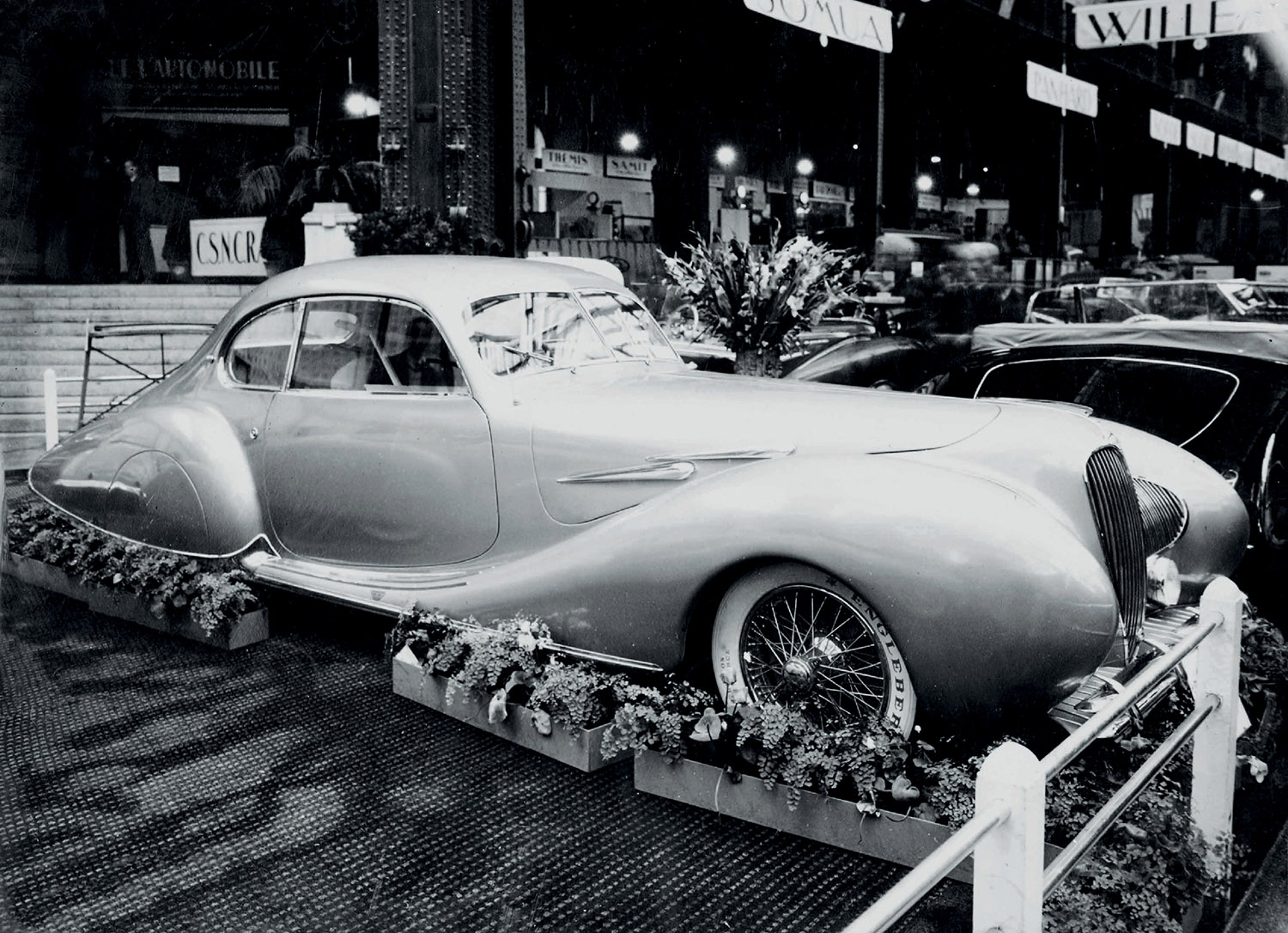
Last of the post WWII aerodynamic coupes was chassis 800851, seen here at the 1948 Paris Auto Salon. The front end was later modified to reflect post war styling preferences. It was a Figoni who has perhaps lost its way. From the Figoni archives.
Figoni on Delahaye
by Richard Adatto, with Diana Meredith
Studio photography by Michael Furman
Page Size 240mm x 285mm
ISBN: 978-1-956309-13-3
302 images
328 pages
Hard cover with dust jacket in a slipcase
$250 USD
Figoni on Delahaye is the most recent of several books on the subject of Figoni, and most welcome as it is still affordable and available, and in English. We found these on the internet:
Figoni & Delahaye – la haute couture automobile Paperback – November 6, 2013
French Edition by Jean-Paul Tissot (Author)
Joseph Figoni Le Grand Couturier de la Carrosserie Automobile Alfa Romeo Volume One (Signed Limited Edition number 289 of 600)
Peter M Larsen; Ben Erickson
